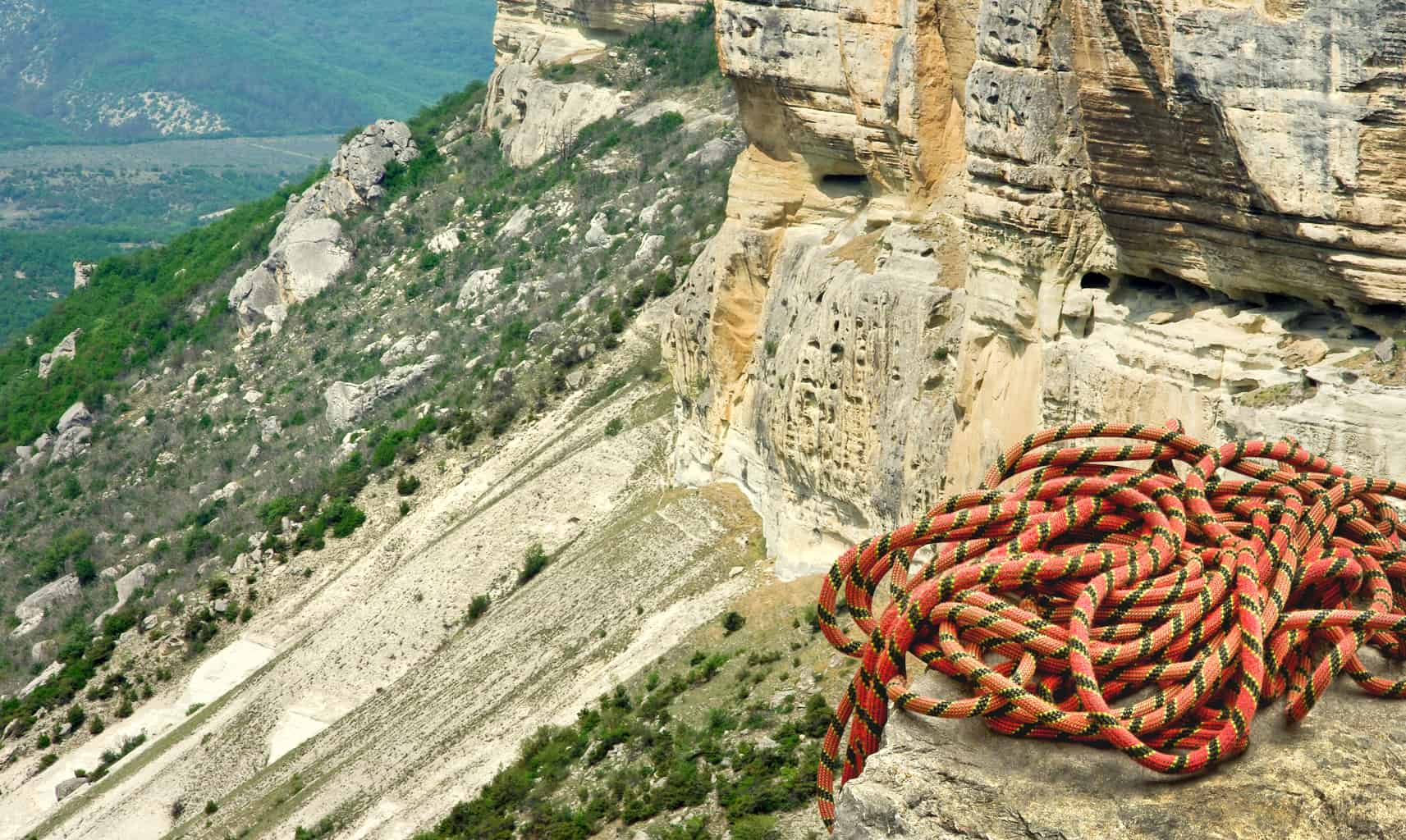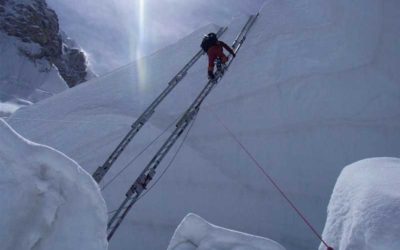
Mountain climbing and rock climbing sounds much the same, especially to the uninitiated. After all, they’re both outdoors, extremely adventurous, require specialized gear and are potentially incredibly dangerous. While that’s true, these two cousins of the outdoors adventure world are very different indeed.
The key differences between rock climbing and mountain climbing are the gear requirements, environmental risk, geographical locations, weather and conditions, duration of climbs, climbing techniques and safety procedures.
I’m guessing that if you found this article you are a rock climber looking to widen your skills and experience to the mountain, or the other way around (likely not many of you).
In this article, I will unpack their differences and similarities, focusing mainly on gear and locations.
Contents
Differences: Rock vs Mountain Climbing
When you’re on a mountaineering trek, you can find rock climbing routes, but you will never find mountaineering routes in the middle of a rock climbing route. This is because their length is so incredibly different.
Location Differences
In mountaineering, you can go for a short day trip, or extend your trip by weeks, if you like.
Rock climbing, on the other hand, occurs on shorter routes (even multi-pitch ones are generally done in a day).
Getting to a specific rock climbing route generally requires a short hike, but you don’t necessarily have to camp out to get there.
Mountaineering occurs in the mountains, hence the name. Rock climbing can happen in any place with suitable rocks. This is often in the mountains, but not necessarily. Take the Rocklands in South Africa, for instance. This is a rather flat area with a few hills, but has the most awesome, world-class rock climbing routes in the country.
Mountains are generally cold, even in equatorial regions. In tropical regions, you might start the day in blistering heat, only to end in extreme cold.
Rock climbing, on the other hand, can occur just about anywhere, so your weather precautions will change according to the region and season you’re in.
Different Challenges in Rock climbing
Rock climbing is all about overcoming technical challenges on a rock face.
In short, you use gymnastic movements to get up a rock face while you’re using specialized equipment. In a word, it’s awesome!
To be successful, you need physical strength, technique and knowledge of how to properly use fall protection equipment, like a harness, belay device, cams, bolts, carabiners, etc.
The central challenge you face while rock climbing is technical physical movement. While you do need to get your head around the fear of falling and other scary stuff, rock climbing is mainly a physical activity, not necessarily a mental one.
…Versus in Mountaineering
Mountaineering, on the other hand, is a lot more objective in its hazards.
While you have to be physically fit (extremely fit!), it’s more of a mind game. You have to push yourself to overcome objective potential hazards, like glaciers, seracs (ice cliffs), crevasses, Bergschrunds, rock falls and avalanches.
Definitely not for the faint hearted. Here, the main thing is to read the environment correctly, properly managing the risks while you’re crossing the territory.
While rock climbing is also potentially lethal, the environmental risk is usually a lot smaller than what you would find in mountaineering.
Gear Differences: Rock vs Mountain Climbing
Gear is one of the main differences between rock climbing and mountaineering.
In mountaineering, you have a pack – whatever doesn’t fit it in the pack, stays at home.
Weight is important. The heavier your pack, the quicker you will tire, so you try to take as little as safely possible and you watch the weight of everything you pack.
For most trips, everyone in the group needs the same equipment, so you can’t necessarily share anything.
In rock climbing, this is also true in some cases, but not necessarily.
Since routes are generally easy to get to, you can take quite a lot with you. After all, most of your stuff stays at the bottom of the route you’re climbing, with your belayer and other friends who’ve come along for the day.
You only need one rack (complete set of rope and attached equipment) for every two to three climbers, so carrying the equipment becomes a team effort.
Here’s a list of the most essential equipment you need for rock climbing:
- Helmet
- Carabiners
- Belay Device
- Shoes (climbing shoes and approach shoes – running shoes usually do the trick)
- Harnesses
- Quickdraws
- Rope
- Chalk Bag
Here’s a list of the most essential mountaineering equipment:
- Ice Axe
- Helmet
- Buffs and Hats
- Gloves and Mitts
- Jacket
- Trousers and Salopettes
- Boots
- Crampons
Regardless of the area you’re trekking in, you will need warm gear to protect you from the cold. Ice axes and crampons are only needed if you’re trekking on a route with ice and snow.
Harness Differences
While you can use the same harness for mountaineering and rock climbing, there are some specific differences in functionality that will affect your choice:
- For rock climbing, you would usually only wear your harness for short periods of time. If you’re doing sport climbing specifically, you don’t carry a lot of gear with you, so you need fewer gear loops.
- Trad (traditional climbing) harnesses have four gear loops instead of the two for sport climbing, since you carry more gear with you.
- For mountaineering, you need to carry a lot of gear with you. This means that you need at least four gear loops on your harness.
- Another factor to consider is that you’re likely to put on your harness while wearing crampons. Here, you need adjustable leg loops.
- In rock climbing, adjustable leg loops or leg loops with easy drop and release are only necessary when you need to go to the bathroom during a multi-pitch climb.
- As you can see, there is some overlap between the harnesses you use for the two sports. When shopping for a harness, make sure that it can do what you need it to do.
Similarities between Rock & Mountain Climbing
Both rock climbing and mountaineering are viewed as adventure sports and require the use of specialized equipment.
In order to do either one of these successfully, you need training and your mind must be strong. In each of these sports, you will face challenges that are physically dangerous, scaring the daylights out of you, which require using your “mind over matter” skills.
That’s about where the similarities end.
Definitions
I you are new to all of this you may need some definitions, just for clarity’s sake.
Rock Climbing
Rock climbing is a technical physical activity in which you physically climb up or traverse a rock face.
This can be broken up into a few sections, including indoor climbing, sport climbing, lead climbing, traditional climbing and ice climbing.
You need specialized gear, technique and training to do this successfully. Routes are generally shorter and can be completed in times ranging from minutes to hours.
Mountain Climbing
Mountain climbing, also called mountaineering, is the act of scaling a mountain with the intent of reaching the summit.
This encompasses many skills, such as survival, navigation, using specialized equipment, endurance and, at times, rock climbing.
Routes are generally longer and can be completed in times ranging from days to months.
Conclusion
Rock climbing and mountaineering are both extreme sports that are incredibly rewarding and a lot of fun.
I hope that this article shed some light on the differences between the two. Feel free to weigh in if you feel that I missed something crucial. Happy adventures!
Written by Felix

About me
Hi! I’m Felix. When I’m not spending time out in the mountains, I like to write about my hobbies. That is how Mountain Homies was created. On this site, I try to gather all the juicy information about Mountaineering that I have learned since I started. Happy adventures!
Related Articles
3 Ways to Spot and Reveal a Crevasse (And Avoid It)
So, how do you spot a crevasse and – more importantly – avoid falling into one? In this article, I will have a look at what crevasses are and how to detect them…
5 Ways of Knowing If Your Climbing Shoes Are Too Big
It has almost become a prestige among climbers to be able to boast about how small and tight climbing shoes can be used. There is therefore a lot of talk…
3 Clever Ways of Crossing A Crevasse
When you’re mountaineering in snow country, you will undoubtedly encounter some crevasses. These are scary, since you don’t always spot them…



